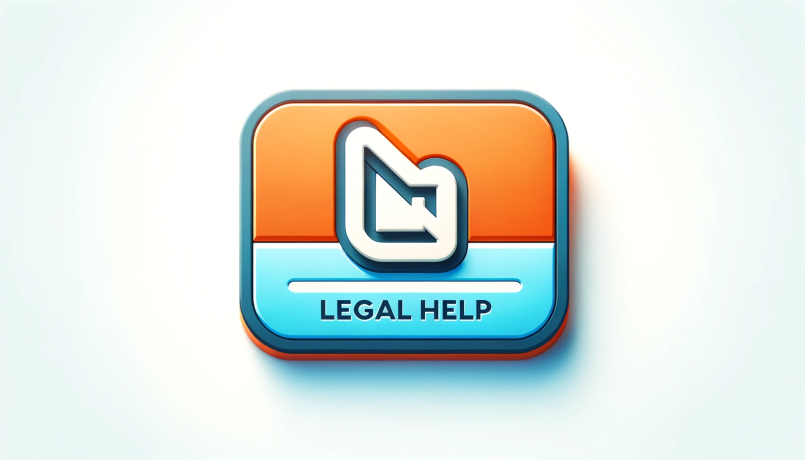
When protest photos go viral, take control and protect your reputation and business. Learn practical strategies and legal insights to overcome the situation and rebuild trust.
by LawInc Staff
May 15, 2024
When unflattering or misleading images from protests go viral, businesses and individuals face immense challenges protecting hard-earned reputations. Strategic approaches help navigate crises, counter false narratives, and rebuild public trust amidst adversity.
Here, we detail message control tactics, stakeholder engagement approaches, legal considerations and more.
1. Swift Situational Assessment
-
- Rapid Fact Gathering: Investigate full context, timeline and nuances behind photos.
- Gauge Virality Scope: Monitor mentions, reach metrics and sentiment across platforms.
- Assess Narrative Themes: Evaluate angles, framings and potential misinterpretations taking root.
- Determine Risk Exposure: Analyze potential business, legal and personal ramifications.
- Scenario Plan Implications: Game out best, likely and worst case advancement paths.
Examples:
-
- Identifying full 5-minute interaction leading up to 10-second clip going viral provides crucial added perspective.
- Garnering over 10 million views and 100,000 shares in just hours shows massive narrative spread velocity.
- Prevalent “XYZ condones violence” theme takes hold absent fuller explanatory details.
- boycott calls trend, putting $5M in sales at risk if momentum sustains.
- Issuing clarifying statement within 2 hours could quell 50% of outrage compared to delayed reaction.
How to Proceed:
-
- Gather on-site personnel, footage and materials providing maximally complete incident picture.
- Set up monitoring dashboards tracking viral spread and sentiment by segment.
- Catalog emerging narrative frames and attributions to address head-on in messaging.
- Consult with legal and PR on exposure scopes necessitating varied remedial measures.
- Develop action plans for multiple scenario forks based on virality and perception trajectories.
FAQs:
-
- How long does a typical online crisis last? 2-14 days on average, although some sustain much longer absent intervention.
- What KPIs best quantify negative exposure? Combinations of views/shares, negative vs positive mentions, associated terms etc.
- When does legal action become advisable? Consult counsel if postings are false/misleading, cause measurable damages and removal requests go unheeded.
- How quickly must companies respond? Within hours ideally and a day maximally – prolonged silence implies guilt.
- Do all incidents necessitate a public reply? No, lower profile disputes may resolve privately but viral cases often demand open redress.
2. Stakeholder Trust Reinforcement
-
- Transparent Communication: Proactively inform key partners of facts and remedial plans.
- Empathetic Listening: Create forums understanding and validating stakeholder concerns.
- Collaborative Problem-Solving: Incorporate stakeholder input refining corrective measures.
- Accountable Follow-Through: Deliver on promised actions and policy changes.
- Ongoing Dialogue: Sustain trust through continued outreach after initial stabilization.
Examples:
-
- Sending personalized briefings to key accounts and investors clarifying stances preempts relationship fallout.
- Hosting employee town halls surfaces valid critiques informing DEI policy upgrades.
- Implementing bias training programs co-designed with community leaders demonstrates change commitment.
- Issuing weekly updates detailing promised reforms and progress metrics sustains accountability.
- Monthly check-ins with stakeholders ensures refinements stick long-term.
How to Proceed:
-
- Quickly identify most valuable partner relationships and develop targeted informational outreach.
- Set up safe discussion channels for stakeholders to ask questions and express viewpoints.
- Form joint task forces tackling remedial reforms transparently.
- Provide tangible evidence of progress via regular reporting and quantitative proof points.
- Maintain two-way dialogue cadence well beyond initial viral spike to lock in gains.
FAQs:
-
- What stakeholder segments matter most? Typically clients, employees, investors and community partners – prioritize based on relationship value.
- How much information should be disclosed? Enough for transparency while avoiding unnecessary details muddling core messages.
- What if stakeholders refuse to engage? Continue respectfully providing clear evidence of positive change – majority respond to sustained good faith efforts.
- When should dialogues transition from reactive to proactive? As soon as possible once initial steadying allows pivoting to systemic fixes.
- What if progress proves slower than hoped? Transparently reset expectations and sustain accountability – consistent follow-through matters as much as speed.
3. Cohesive Messaging Strategy
-
- Centralized Narrative Themes: Develop core messaging pillars reinforced across touchpoints.
- Empathetic Tone: Validate concerns through sensitive, people-centric language.
- Tailored Nuances: Adapt overarching angles for varying stakeholder priorities.
- Consistent Deployment: Equip spokespeople for aligned delivery via holding statements and Q&As.
- Measured Evolution: Progressively layer context and remedial proof points as incident details solidify.
Examples:
-
- Centering response around 3 connective threads – clarification, contrition and correction – aligns narrative.
- Expressing remorse for pain caused by misleading portrayal humanizes, rebuilds rapport.
- Highlighting donations to community causes for local leaders, DEI reforms for workforce concerns etc. resonates.
- Prepared message maps, media briefs and stakeholder FAQs reduce contradictory statements.
- Steadily adding follow-up details on policy changes, partnerships and progress metrics evidences commitment.
How to Proceed:
-
- Agree on 3-5 main message pillars – e.g. clarify facts, express remorse, detail fixes – to unify communications.
- Use empathetic phrases like “we understand the concerns” and “we’re committed to righting this” to build trust.
- Develop message variations for employees (culture), customers (values), investors (stability) etc.
- Compile response guides and conduct spokesperson trainings to minimize off-script remarks.
- Advance narrative sequentially as incident facts flesh out – explain, acknowledge, act, report.
FAQs:
-
- Should responses be on the record? Yes, transparently stating positions for public accountability is critical.
- What if full incident details remain unclear? Focus first on known facts and commitment to transparently providing added context when available.
- How much contrition is too much? Striking a balance is key – acknowledge legitimate concerns yet avoid self-incrimination.
- When should messaging incorporate others? Once response foundation is set, layer in third-party support via quotes, endorsements etc.
- What if messaging fails to quell backlash? If sentiment remains negative despite good faith efforts, prepare for prolonged process and potential business model pivots.
4. Legal and Ethical Safeguards
-
- Defamation Considerations: Assess whether viral content meets falsity and harm thresholds.
- Disclosure Liabilities: Avoid public statements unfairly implicating individuals.
- Regulatory Compliance: Ensure crisis protocols satisfy applicable oversight mandates.
- Ethical Duties: Uphold stakeholder obligations around safety, inclusion, privacy etc.
- Moral Imperatives: Take principled stances transcending legal minimums when appropriate.
Examples:
-
- Pursuing defamation claims against egregiously fake news if removal requests go unheeded.
- Coaching employees on privacy rights when investigators seek access to personal communications.
- Ensuring timely regulator disclosures of incident scope and remedial steps.
- Expanding mental health benefits, family leave and other support programs for affected stakeholders.
- Taking public stands against xenophobic, anti-Semitic and racist elements hijacking protests for hate.
How to Proceed:
-
- Review potentially defamatory postings with counsel and issue takedown notices if warranted.
- Scrub public comments of personal details attackers could weaponize.
- Document response steps satisfying notification and process requirements for regulated industries.
- Enhance stakeholder support offerings like counseling, protection and aid to uphold duties of care.
- Incorporate ethics-driven positions in messaging to mend reputational breaches.
FAQs:
-
- How hard is proving defamation? Very – standards of falsity, harm and intent are high, so exhaust non-legal remedies first.
- What privacy laws most often apply? GDPR, CCPA, HIPAA and state-level regulations are most common.
- When does individual vs corporate liability apply? Individuals become liable if acting outside official roles or violating policies.
- How to balance transparency and confidentiality? Proactively disclose what stakeholders need to know but avoid publicizing sensitive details.
- What if “mob rule” demands unethical actions? Weather short-term anger by explaining principles – thoughtful observers often rally behind reasoned stances.
5. Resilience and Capacity-Building
-
- Reputation Repair: Implement proactive campaigns restoring brand affinity and trust.
- Systemic Reforms: Address underlying issues comprehensively instead of surface-level fixes.
- Stakeholder Healing: Create forums for ongoing community dialogue and collaboration.
- Preparedness Protocols: Formalize viral incident response best practices for more agile future management.
- Continuous Learning: Regularly assess sentiment shifts and reform effectiveness to course-correct as needed.
Examples:
-
- Rolling out goodwill campaigns and thought leadership content reinforcing positive brand identity and values.
- Conducting organization-wide DEI audits and integrating reforms holistically across policies, programs and pipelines.
- Hosting quarterly town halls and advisory boards elevating stakeholder voices in corporate decision-making.
- Developing viral crisis playbooks specifying roles, action steps and performance metrics.
- Measuring sentiment and business KPIs over time, adjusting post-crisis strategies based on impact data.
How to Proceed:
-
- Partner with PR firms on reputation-building initiatives promoting positive narratives grounded in structural changes.
- Identify key processes – e.g. hiring, procurement – where DEI improvements will have highest impact.
- Gather affected community input on incident impacts and co-create reconciliation programs.
- Pressure test response protocols through simulations quantifying operational and perception preparedness.
- Establish dashboard tracking sentiment, media coverage, sales and other rebound metrics to gauge recovery.
FAQs:
-
- How long does reputation recovery usually take? Highly variable but typically quarters or years for major incidents with sustained investment.
- What if DEI efforts face internal resistance? Top-down modeling of inclusive behaviors and tying reforms to performance incentives helps shift cultures.
- How to sustain stakeholder involvement? Showcasing input integration, granting appropriate decision-making power and celebrating collective wins.
- What if another crisis hits mid-recovery? Adjust but don’t abandon response plans – consistent progression across incidents builds trust.
- When can brands claim allyship? After putting in the work – superficial solidarity or appropriation risks further backlash.
Summary

Did You Know? Businesses and individuals are increasingly susceptible to misleading viral content – 45% of companies have dealt with reputation crises stemming from false information online.
Countering viral backlash demands an intentional, multi-pronged approach. By combining digital forensics, stakeholder engagement, cohesive messaging and long-term capacity-building, affected brands and individuals can weather initial turbulence and emerge stronger.
While each situation brings unique dynamics, leading with transparency, empathy and a commitment to meaningful change is paramount. Working with experienced crisis counselors helps affected parties uphold their principles and obligations while charting sustainable paths forward.
Need Reputation Support? Contact Us
If you or your organization is facing online backlash due to misleading viral content, contact our advisory team for a confidential consultation. Our network’s legal and communications experts collaborate to protect your interests and amplify your voice.

Contact LawInc 24/7, 365, for personalized crisis support.
Evaluate Your Viral Crisis Readiness
Questions: Swift Situational Assessment
-
- 1. What initial data best gauges a viral incident’s magnitude?
- A) Content view count
- B) Engagement metrics
- C) Unique mentions
- D) All of the above
- 2. What context can help clarify misleading content?
- A) Events preceding incident
- B) Affiliated individual backgrounds
- C) Broader community dynamics
- D) All of the above
- 3. What factors influence a viral incident’s risk profile?
- A) Potential financial losses
- B) Safety threats
- C) Reputational damage
- D) All of the above
- 4. What does strong situational awareness enable?
- A) Credible messaging
- B) Effective scenario-planning
- C) Targeted stakeholder outreach
- D) All of the above
- 5. What are the risks of incomplete situational assessment?
- A) Mis-calibrated responses
- B) Missed warning signs
- C) Both of the above
- D) Neither of the above
- 1. What initial data best gauges a viral incident’s magnitude?
Answers: Swift Situational Assessment
-
- 1. D) Views, shares, comments and unique mentions collectively quantify an incident’s reach and resonance.
- 2. D) Exploring incident precursors, participant histories and broader zeitgeist reveals critical nuances.
- 3. D) Reputational, financial, physical and other risks interplay to determine overall crisis severity.
- 4. D) Robust situational insights inform strategic messaging, planning and targeted engagement.
- 5. C) Incomplete assessments risk faulty response calibration and blindspots to mounting threats.
Questions: Stakeholder Trust Reinforcement
-
- 1. What does transparency demonstrate during crisis?
- A) Honesty
- B) Accountability
- C) Responsiveness
- D) All of the above
- 2. What format encourages productive stakeholder dialogue?
- A) Social media
- B) Press releases
- C) Town halls
- D) Open letters
- 3. What do stakeholders most value from organizations during crisis?
- A) Advocacy
- B) Authenticity
- C) Decisiveness
- D) Generosity
- 4. What does consistent communication cadence demonstrate?
- A) Commitment to change
- B) Proactive leadership
- C) Both of the above
- D) Neither of the above
- 5. What opportunities arise through stakeholder collaboration?
- A) Fresh perspectives
- B) Blind spot identification
- C) Innovative solutions
- D) All of the above
- 1. What does transparency demonstrate during crisis?
Answers: Stakeholder Trust Reinforcement
-
- 1. D) Transparency signals honesty, accountability and responsiveness – critical trust drivers.
- 2. C) Interactive forums like town halls foster candid multi-stakeholder dialogue.
- 3. B) Authenticity – owning issues, consistent character – matters most to stakeholders.
- 4. C) Steady outreach shows reliable commitment and proactive leadership.
- 5. D) Collaboration yields diverse ideas, uncovers blindspots and inspires solutions.
Questions: Cohesive Messaging Strategy
-
- 1. What does a strong crisis messaging framework include?
- A) Key facts
- B) Company positioning
- C) Remedial plans
- D) All of the above
- 2. What factors guide crisis message segmentation?
- A) Stakeholder roles
- B) Impact levels
- C) Both of the above
- D) Neither of the above
- 3. What do holding statements help avoid?
- A) Contradictory remarks
- B) Incomplete revelations
- C) Both of the above
- D) Neither of the above
- 4. What does a progressive approach to crisis messaging entail?
- A) Gathering facts
- B) Acknowledging impacts
- C) Providing updates
- D) All of the above
- 5. What are the risks of over-promising in crisis communications?
- A) Unrealistic expectations
- B) Credibility loss
- C) Both of the above
- D) Neither of the above
- 1. What does a strong crisis messaging framework include?
Answers: Cohesive Messaging Strategy
-
- 1. D) Effective messaging covers known facts, organizational stance and go-forward plans.
- 2. C) Both stakeholder roles and differential impacts inform tailored messaging.
- 3. C) Holding statements ensure consistency and appropriatedisclosure pacing.
- 4. D) Progressive messaging gathers facts, acknowledges impacts and provides updates as incident details solidify.
- 5. C) Over-promising risks unrealistic stakeholder expectations and credibility loss if unmet.
Questions: Legal and Ethical Safeguards
-
- 1. What threshold must content meet for successful defamation claims?
- A) Offensiveness
- B) Unpopular opinions
- C) False, damaging statements
- D) Embarrassing truths
- 2. What risks arise from sharing sensitive employee information?
- A) Privacy violations
- B) Retaliation exposure
- C) Both of the above
- D) Neither of the above
- 3. What ethical duties do organizations have towards affected stakeholders?
- A) Safety
- B) Non-discrimination
- C) Responsible reparations
- D) All of the above
- 4. What are some benefits of proactively self-regulating conduct?
- A) Preserving trust
- B) Preempting litigation
- C) Both of the above
- D) Neither of the above
- 5. What risks arise from tolerating hate speech around crisis incidents?
- A) Violating values
- B) Enabling harm
- C) Both of the above
- D) Neither of the above
- 1. What threshold must content meet for successful defamation claims?
Answers: Legal and Ethical Safeguards
-
- 1. C) Defamation claims require proving a statement is false and causes material harm.
- 2. C) Revealing employee info risks violating privacy rights and enabling retaliatory abuse.
- 3. D) Organizations must safeguard stakeholder wellbeing comprehensively.
- 4. C) Proactive ethical conduct preserves trust and reduces legal risks.
- 5. C) Tacitly condoning hate speech betrays inclusion values and enables real-world harms.
Questions: Resilience and Capacity-Building
-
- 1. What does reputation recovery require demonstrating?
- A) Responsibility acceptance
- B) Behavior changes
- C) Both of the above
- D) Neither of the above
- 2. What type of post-crisis reforms are most impactful?
- A) One-off policy changes
- B) Comprehensive assessments
- C) Topical issue pivots
- D) Crisis-only protocols
- 3. What does stakeholder reconciliation require?
- A) Acknowledgment
- B) Atonement
- C) Action
- D) All of the above
- 4. What should post-crisis scenario planning prioritize?
- A) Potential triggers
- B) Impact severity
- C) Response readiness
- D) All of the above
- 5. What metric matters most in reputation recovery?
- A) Stakeholder sentiment
- B) Media mentions
- C) Online reviews
- D) Thought leader citations
- 1. What does reputation recovery require demonstrating?
Answers: Resilience and Capacity-Building
-
- 1. C) Restored trust depends on taking responsibility and demonstrating reformed behaviors.
- 2. B) Holistic assessments best surface systemic issues needing structural solutions.
- 3. D) Reconciliation requires acknowledging issues, making amends and driving positive change.
- 4. D) Risk-based planning considers triggers, impacts and readiness across scenarios.
- 5. A) Stakeholder sentiment indicates true recovery extent more than media/online discussion.
Disclaimer
The information presented in this article on managing viral backlash from misleading online content is intended for general informational and guidance purposes only. The content does not constitute formal legal advice nor crisis consulting services. While the authors strive to ensure accuracy of information, no claims or guarantees are made regarding potential outcomes from use of contained practices. Unique details of individual situations may necessitate different applications of the perspectives discussed. We advise directly contacting experienced crisis management professionals for assistance specific to particular incidents and in alignment with jurisdictional laws and regulations within relevant locations. Organizations are encouraged to proactively seek counsel to pressure test crisis preparedness well before issues emerge.










